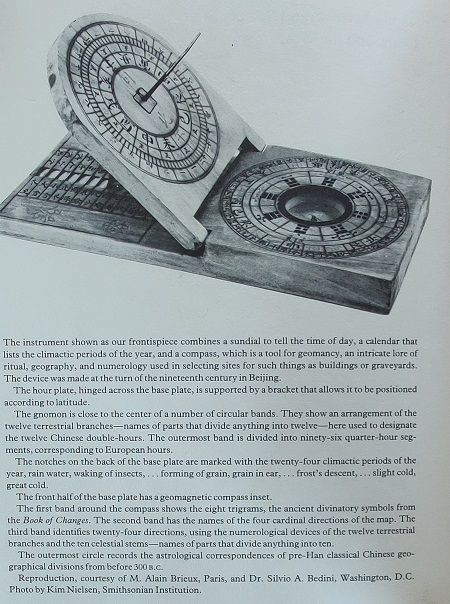This is a fantastic magic square and truly magical.
This is a magic square because all the rows, columns and major diagonals add up to 175. In addition, this is a symmetrical magic square because any pair of numbers equidistant from the center cell of 25 add up to 50 or 2(25). Finally, this is an ultra-magic square because in addition to being a magic and symmetrical square, this is also a pandiagonal square.
Triplets of numbers of the same cell color add up to 75 or (3x25). There are eight gnomon shaped triplets and eight linear groups of numbers, all revolving around the central number, 25.
This square features several important symbols seen in sacred geometry and early Christian art (for example, book covers of illuminated manuscripts):
· The cross in square pattern
· the cruciform shape
· several gnomon or right angles
· the axis mundi
· the quincunx
· perfect mathematical symmetry
· the swastika
The Swastika
The swastika was a common solar symbol to the Buddhist, early Chinese, Greek, Roman, and Native American cultures. The swastika was used on Greek coins contemporary with Pythagoras and was commonly used in Roman mosaics around the time of Christ.
Two coins from Knossos, c. 350 B.C., distribution map of swastika symbol usage
The swastika was a powerful symbol to all cultures as the swastika incorporated these familiar Chinese/Pythagorean concepts: the path and cycle of the sun, the gnomon, math, the calendar, and magic squares.
The theory of the swastika being connected to the Luo Shu (or the TLV bronze mirror) has been discussed by many including Marcel Granet (La Pensee Chinoise) and also touched upon in Sir Joseph Needham’s epic book, Science and Civilisation in China, Vol. III.
The theory of the swastika being connected to the Luo Shu (or the TLV bronze mirror) has been discussed by many including Marcel Granet (La Pensee Chinoise) and also touched upon in Sir Joseph Needham’s epic book, Science and Civilisation in China, Vol. III.
The Quincunx
The cross-in-square creates four quadrants with each quadrant containing a 3x3 grid of numbers. The four quadrants form a quincunx around the center number, five.
As noted earlier, this is a symmetrical square, the sum total of the center number plus any four numbers equidistant from the center number will sum to
As noted earlier, this is a symmetrical square, the sum total of the center number plus any four numbers equidistant from the center number will sum to
The Center or axis mundi
The numbers 5, 13, and 41 correspond to the center numbers of the order 3, 5 and 9 magic squares respectively and these are the odd components of their own Pythagorean triplet (3-4-5, 5-12-13, 9-40-41).
These numbers occur along the same diagonal. In addition, the number to the left of each one of these centered magic square numbers is a square number. Furthermore, the 13/25 connection points to the 5x5 magic square and this 7x7 square is linked to five and powers of five.
These numbers occur along the same diagonal. In addition, the number to the left of each one of these centered magic square numbers is a square number. Furthermore, the 13/25 connection points to the 5x5 magic square and this 7x7 square is linked to five and powers of five.
magic square
|
center no.
|
total numbers in square
|
Pythagorean triplet
|
Planet
|
3x3
|
5
|
9
|
3 - 4 - 5
|
Saturn
|
5x5
|
13
|
25
|
5 - 12 - 13
|
Mars
|
7x7
|
25
|
49
|
7 - 24 - 25
|
Venus
|
9x9
|
41
|
81
|
9 - 40 - 41
|
Moon
|
27x27
|
365
|
729
|
27 - 364 - 365
|
Sun
|
In other words, numbers are a language and magic squares help to unravel the code. Some of the keys to this "language of numbers":
- powers of numbers,
- Pythagorean triplets, and
- the center numbers of other magic squares.
Symbols for Time and Space
The Gnomon and Magic Squares played significant roles in the development of symbols such as the carpenter’s square, the cruciform shape, and the swastika. Number represented the first language to humankind and was believed to be a gift from Heaven in order for humankind to evolve and prosper through math and the ordering of the cosmos. The carpenter’s square, the cruciform, and the swastika could very well be mathematical and solar symbols representing the connection of humankind to the Heavens and earth.
This is called the Knigts Tour. The numbering includes the numbers 1 thru 49 but not including the five numbers: 23, 24, 25, 26, and 27 (which add to 125) so the Star of David is more evident.
This square was discovered by Walter Trump, a leading researcher and world authority in magic squares.
His website can be found in the right margin of this blog under “links” (scroll to top of page). Among other discoveries, Trump has figured out how many possible arrangements of numbers will generate a magic square for some orders of magic squares. For instance, there is one possible arrangement of numbers for the 3x3 Magic Square. There are 880 possible arrangements for the 4x4 magic square and there are over 2.75 million arrangements for the 5x5 magic square!





























